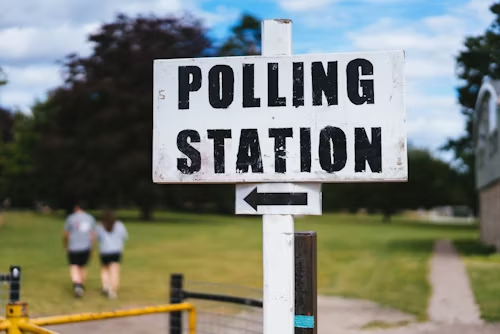After months of fluctuating polls, betting markets, and intense political campaigning, the 2024 election has arrived. With the race between Democrat Kamala Harris and Republican Donald Trump reaching a fever pitch, there are several factors to watch that could swing the election one way or the other. Here’s a look at six pivotal elements that could decide the next president.
1. The Gender Gap: How Big Will It Be?
The 2024 race has often been framed as a battle between “boys versus girls,” with polls consistently showing Harris leading among female voters and Trump performing better with male voters.
In a recent USA TODAY/Suffolk University poll (October 14-18), Harris led Trump 53%-36% among women, while Trump led 53%-37% among men. Since women traditionally vote at slightly higher rates than men, this gender divide could give Harris a crucial edge. With abortion rights continuing to be a dominant issue post-Roe v. Wade, Harris is banking on significant support from women voters to power her to victory.
Democrats are also encouraged by strong early voting turnout among women, who have outpaced men by about 9 percentage points—consistent with the margins seen in 2020 when Biden defeated Trump.
2. The ‘Bro Vote’: Will Trump’s Appeal to Young Men Work?
To counter Harris’ dominance among women, Trump has focused heavily on winning over young, non-college-educated men, a voting bloc that has often been overlooked.
Trump’s campaign has embraced a distinctly “masculine” appeal, with events at UFC fights, college football games, and interviews with popular internet personalities like Joe Rogan and Logan Paul. He has even launched a Trump-branded sneaker to tap into this market. This push targets young men under 50, a group that makes up about 11% of voters in key battleground states.
Many of these voters are considered low-propensity, meaning they don’t always vote. For Trump to win, he needs high turnout among this group, making the “bro vote” a potential game-changer.
3. Could Harris Win the Senior Vote?
While Democrats have historically struggled to carry seniors, polling suggests that Harris might reverse this trend, particularly among older women. Some have referred to this shift as a potential “silver surge.”
A USA TODAY/Suffolk University poll found Harris leading Trump 46%-44% among voters 65 and older. An AARP poll from late September revealed Harris leading senior women 54%-42%. Rising costs and the protection of Social Security and Medicare are key issues for seniors, and many older women are also prioritizing abortion rights, reflecting concerns about their own reproductive rights in comparison to younger generations.
A Des Moines Register/Mediacom poll in Iowa found Harris leading Trump by three percentage points, with a stunning 63%-28% margin among senior women. This could be crucial, particularly in Midwest battleground states like Iowa, Pennsylvania, and Wisconsin, where seniors are a key demographic.
4. Can Trump Make Inroads with Black and Latino Voters?
Polling suggests Trump has made some inroads with Black and Latino voters, two traditionally Democratic-leaning groups. If he can peel off even a small percentage of Black voters in cities like Philadelphia, Detroit, and Milwaukee, it could complicate Harris’ path to victory.
In 2020, Biden won 92% of the Black vote and 65% of the Latino vote, but recent polls show Harris’ margin slipping. An October USA TODAY/Suffolk poll found Harris leading Black voters 72%-17%, but that’s down from Biden’s 92%-8% in 2020. Similarly, a Florida International University poll found Harris leading Latino voters 57%-33%, regaining some ground but still below Biden’s 2020 margin.
This shift is most pronounced in key battleground states like Pennsylvania, Michigan, and Wisconsin, where Harris is polling better than Biden with white voters but trailing among voters of color. If Trump can narrow Harris’ margin among Black and Latino voters, it could significantly impact the outcome.
5. The Puerto Rican Backlash: Will It Hurt Trump in Pennsylvania?
A recent controversy involving a racist joke about Puerto Rico at a Trump rally has sparked backlash, particularly among Puerto Rican voters. The comedian Tony Hinchcliffe’s remark about Puerto Rico being a “floating island of garbage” has drawn criticism, and a significant portion of Puerto Rican voters in Pennsylvania are offended by it.
Pennsylvania, with its growing Latino population—especially in cities like Allentown—could be a key battleground. A poll from Noticias Univision and YouGov found Harris leading Latino voters in Pennsylvania 64%-30%, with a 67%-27% advantage among Puerto Rican voters. The fallout from the controversy could play a significant role in influencing this demographic, potentially giving Harris a boost in a state crucial to the election.
6. The ‘Blue Wall’: Will It Hold or Split?
The Rust Belt states—Pennsylvania, Michigan, and Wisconsin—are often referred to as the “blue wall” due to their historic support for Democrats in recent presidential elections. If Harris carries all three of these states, she would likely win the election, even if she loses some Sun Belt states.
In 2016, Trump flipped these states to the Republican column, but in 2020, Biden regained them. If Harris wins Pennsylvania, Michigan, and Wisconsin, she could secure the Electoral College with 270 votes, even if she loses some of the Sun Belt states like North Carolina and Georgia.
For Trump, winning any of these states, particularly Pennsylvania, opens up multiple paths to victory. For instance, if Trump wins Pennsylvania but loses Michigan and Wisconsin, he could still win the Electoral College by pairing that victory with wins in the Sun Belt states.
The outcome of the election could come down to the fate of the “blue wall” and whether it holds firm for Harris or splits in Trump’s favor.
As Election Day approaches, these six factors—gender dynamics, the “bro vote,” senior turnout, Black and Latino support, Puerto Rican backlash, and the fate of the “blue wall”—could prove decisive in determining the next president of the United States. Stay tuned as the race heads toward a nail-biting conclusion.








